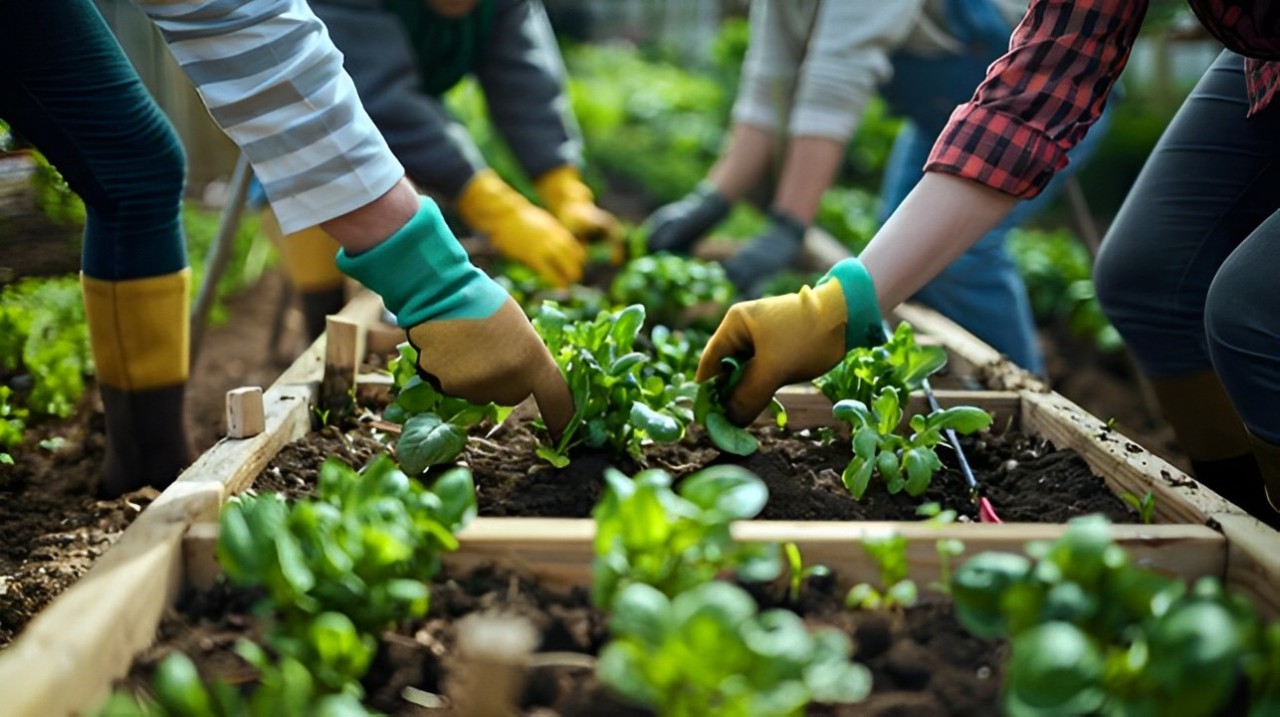Gardening with kids is a way to spend quality time together while teaching children valuable life skills like responsibility, patience, and problem-solving. It shows them how plants grow and thrive when nurtured, helping them understand the importance of consistency. Even small projects, like growing herbs in a mini planter, encourage healthy habits and give children a sense of accomplishment.
Engaging Gardening Projects
There are many ways to engage kids in gardening that are fun and easy for the whole family. Here are a few ideas to spark creativity and excitement.
- Miniature Gardens
Miniature gardens allow kids to create their tiny world inside the garden. You can design themed gardens, like fairy gardens with moss, tiny plants, and little figurines, or dinosaur gardens with succulents and small plastic dinosaurs. The kids will love arranging the decorations and choosing which plants will grow in their tiny space. This will nurture their imagination and creativity and teach them how plants grow and interact within a small environment.
- Herb Gardens
Herb gardens are an excellent way to introduce children to the idea of growing their food, and they also encourage healthy eating habits. You can involve them in planting easy herbs like basil, mint, or parsley, and let them water and care for the plants regularly. Plus, herbs are ideal for small spaces, so even a few mini planters on the windowsill can bring the gardening experience indoors.
Vegetable Gardens
Kids love the excitement of growing their favorite vegetables from seeds or seedlings. Letting them choose vegetables they enjoy eating, like cherry tomatoes, cucumbers, or carrots, makes the process even more rewarding. They can plant, water, and watch the vegetables grow, learning about the patience and care it takes to grow food. Harvest time becomes a celebration, with children excited to taste the fruits or veggies of their labor.
Creative Crafting in the Garden
Gardening is also a chance to get crafty. Creative projects make gardening more engaging and allow children to personalize their space. Here’s how you can go about it:
Decorative Plant Labels
Encourage kids to personalize their garden with painted plant labels. They can paint rocks or craft wooden sticks with the names of the plants they’ve grown. This project combines art with gardening and helps them remember which plants are which. It’s also an excellent way for younger children to practice recognizing letters and words.
Building Scarecrows
Creating a scarecrow is a fun way to introduce children to protecting plants from pests. Gather old clothes, a straw hat, and some stuffing material, and let the kids build a scarecrow for the garden. This will help them with teamwork and problem-solving as they figure out how to make the scarecrow sturdy enough to stand guard over the garden.
Creating Garden Art
Using recycled materials to create garden art is another fun way to involve kids in outdoor projects. They can build wind chimes from old silverware, make garden sculptures from plastic bottles, or design colorful flags to hang among the plants. This type of crafting teaches kids about sustainability and how to repurpose everyday items creatively.
Educational Activities
Gardening presents many opportunities to introduce kids to science and nature through hands-on learning.
Seed Collection and Planting
Collecting seeds from existing plants teaches children about the life cycle of plants and seed propagation. Show them how to gather seeds from flowers, fruits, or vegetables and plant them for the next season. This activity provides insight into where plants come from and helps them understand how nature renews itself.
Nature Scavenger Hunts
A nature scavenger hunt will turn the garden into an exciting adventure. Create a list of items for the kids to find, like a red flower, a smooth rock, or a buzzing bee, and set them loose to explore. This encourages observation skills and helps children connect with the environment, learning to identify plants, insects, and garden features.
Science Experiments
Simple science experiments in the garden spark curiosity and deepen children’s understanding of how plants grow. For example, they can plant seeds in different environments, like eggshells, containers, or the ground, and observe how each condition affects growth. Experiments like these nurture curiosity and inspire children to ask questions about the natural world.
Conclusion
Gardening with kids creates opportunities for learning, bonding, and discovery. Whether growing herbs in a mini planter or tending a vegetable garden, every gardening project builds skills and strengthens family connections.
For More Articles Visit: https://todaybloggingworld.com/
ㅤ ㅤ ㅤ ㅤ ㅤ ㅤ ㅤ ㅤ ㅤ ㅤ ㅤ ㅤ ㅤ ㅤ ㅤ ㅤ ㅤㅤ ㅤ ㅤ ㅤ ㅤ ㅤ ㅤ ㅤ ㅤ ㅤ ㅤ ㅤ ㅤ ㅤ ㅤ ㅤ ㅤㅤ ㅤ ㅤ ㅤ ㅤ ㅤ ㅤ ㅤ ㅤ ㅤ ㅤ ㅤ ㅤ ㅤ ㅤ ㅤ ㅤㅤ ㅤ ㅤ ㅤ ㅤ ㅤ ㅤ ㅤ ㅤ ㅤ ㅤ ㅤ ㅤ
